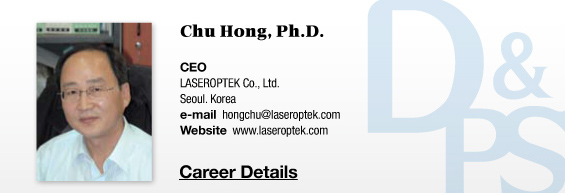In the 1990s, dermatologic laser saw great advancements thanks to the theory of selective photothermolysis. Various lasers indicated for pigmented lesions, hair removal and resurfacing, etc. were released by many manufacturers and started leading the aesthetic market. In 1988, Thomas B. Fitzpatrick (American dermatologist; 1919~2003) established standardized criteria of human skin types1. After this, dermatologic lasers were selected based on patient skin types and principles of selective photothermolysis. Different lasers should be selected based on the skin type even in the same lesion in order to minimize side effects and optimize treatment outcome. Along with the theory of selective photothermolysis, Fitzpatrick’s skin types contributed greatly to establishing accurate protocols both for users and manufacturers of dermatologic lasers.
HELIOSⅡ/LOTUSⅡ/HYPERION – Manufacturer: LASEROPTEK(www.laseroptek.com)
One interesting fact is that Fitzpatrick worked in the same hospital as Anderson who pioneered selective photothermolysis. Fitzpatrick was Chairman of the Department of Dermatology at Harvard Medical School from 1959 to 1987 and also served as Chief of the Massachusetts General Hospital Dermatology Service. Fitzpatrick is revered as the father of modern dermatology and was voted as one of the most influential dermatologists in the last 100 years. He also holds the record of becoming the youngest professor and Chairman at the age of 39 (1959) at Harvard Medical School.
In the 1990s, interest in Q-switched laser for treatment of pigmented lesion was renewed. This was the period where laser hair removal developed and the scientific foundation for the switch from ablative to nonablative method was created. In other words, the 1990s is an important period for medical lasers that led to their great advancements in the 2000s.
The Q-switched laser used in pigmented lesions and tattoo removal generally has a short pulse duration (nanoseconds, 10-9 seconds) and high peak power (approximately 108 watt). The letter “Q” stands for “quality factor” of the oscillator. “Q-switching” refers to the mechanism by which the Q value is changed to either store the light energy within the laser oscillator or emit the stored energy. Switching generally means turning on or off the Pockels cells (optical shutter) placed between mirrors of the oscillator. In 1967, Goldman in the US suggested the possibility of tattoo removal using a Q-switched ruby laser with the pulse duration of 50ns, however, it was only in 1989 that the FDA approved the laser for this use .
-To be continued-





















